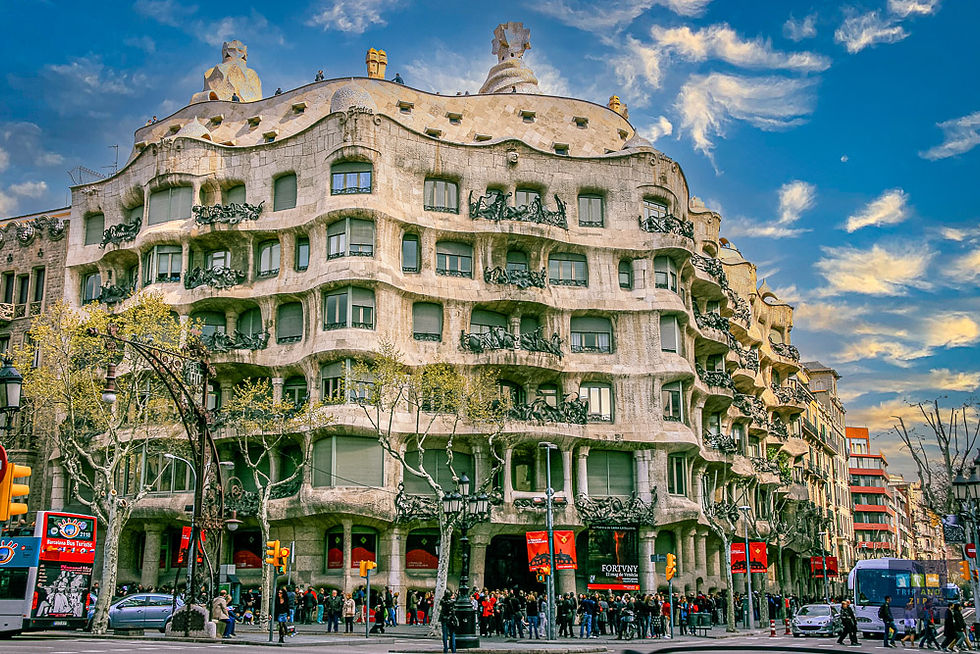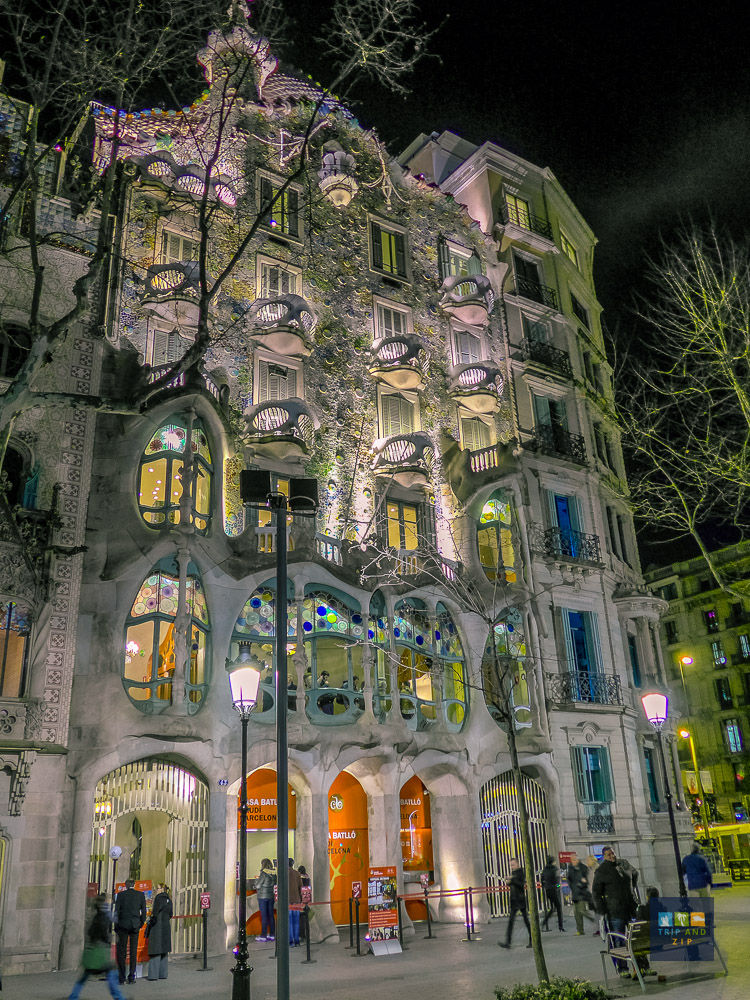On Gaudí’s Trail in Barcelona, Spain
- Trip And Zip

- Apr 2, 2010
- 3 min read
Updated: Mar 15
Barcelona is inseparable from Modernisme, the Catalan take on Art Nouveau, which flourished in the late 19th and early 20th centuries. This artistic movement was a reaction against industrialization’s rigid structures, embracing organic forms, intricate details, and a return to nature as inspiration.
While Antoni Gaudí is undoubtedly the most famous figure of this era, he was not alone. Architects like Lluís Domènech i Montaner, known for the Palau de la Música Catalana, and Josep Puig i Cadafalch, the mind behind Casa Amatller, also left their mark on the city. Their buildings, characterized by flowing lines, elaborate facades, and bold structures, turned Barcelona into an open-air museum of Modernisme.
We dedicate much of our time in Barcelona to Gaudí, trying to grasp some of the ideas behind Catalan Modernism, a movement that is woven into the city’s identity. Once again, I realize I haven’t done my homework—modernist trends in art are blurred in my mind, overlapping into a chaotic mix of Gaudí, Klimt, Dalí, Picasso, and Chagall. I might recognize their work in illustrated books, but understanding their artistic choices is another matter entirely. And if I wasn’t already confused enough about Art Nouveau, Barcelona just made sure of it!

Everywhere I turn, Gaudí’s presence is felt. His architecture is not merely a backdrop to the city but an essential part of its character. Unlike other cities, where historic buildings blend into the urban landscape, Gaudí’s works demand attention. They challenge expectations, distort familiar forms, and invite curiosity.
Sagrada Família: A Vision Still in Progress
Standing in front of the Sagrada Família, I feel both wonder and curiosity. This is not a cathedral in the traditional sense—it is alive, almost organic in its form. The soaring spires resemble natural formations rather than towers of stone. The façades, filled with intricate carvings and biblical scenes, are overwhelming in their detail. The Nativity Façade, the only one completed in Gaudí’s lifetime, is filled with delicate, almost playful sculptural elements, while the Passion Façade, added later, has a stark, angular design that contrasts sharply with the rest of the basilica.
The Cathedral was closed for visitors, but even from the outside, the sense of movement and evolution in the structure is unmistakable. It is a work that has defied time, still unfinished over 140 years after its construction began. The cranes and scaffolding surrounding it are a reminder that this basilica is a project that spans generations, a monument to patience, craftsmanship, and vision.


Casa Batlló: A Living, Breathing Structure
A few blocks away, Casa Batlló takes Gaudí’s imagination to a different scale. The building, with its iridescent, scale-like tiles and bone-like window frames, is often called the House of Bones, but it feels more like a living organism. The undulating façade, the wave-like balconies, the spine-like rooftop—everything about it is in motion. Inside, the curved walls, flowing staircases, and skylights that filter in a deep blue glow create a feeling of being underwater.

As I explore its rooms, I begin to understand that Gaudí’s architecture is not just about aesthetics—it is about sensation. His spaces are meant to be experienced, not just seen. He doesn’t design walls and ceilings; he shapes environments, playing with light, movement, and organic flow.
Throughout the trip, these questions keep coming back. What is it like to live in a house where nothing is straight? Walls, ceilings, furniture, balconies—everything in Gaudí’s world is curved and fluid. Or how does one design a park where trees seem to grow upside down, their roots reaching for the sky? I found no answers, only a deeper appreciation for the pure creativity behind his work.




Parc Güell: Gaudí’s Playground
Barcelona would not be the same without Gaudí, and his influence extends beyond buildings. Parc Güell, located on a hill overlooking the city, is a park like no other. Designed at the start of the 20th century, it was meant to be a luxury housing development but ended up as a surreal public space, a mix of architecture and nature woven together in Gaudí’s unmistakable style.

Walking through the park, nothing feels accidental. Curved benches covered in colorful mosaics, columns resembling tree trunks, and a grand staircase guarded by the famous dragon sculpture all give the feeling of stepping into a fantasy world. From the main terrace, the view over Barcelona is spectacular, stretching all the way to the Mediterranean. Yet, even with the panorama in front of me, I find myself more intrigued by the details—Gaudí’s fascination with organic forms, his way of blending structures into the landscape, and the sense of movement in his designs.





Comments